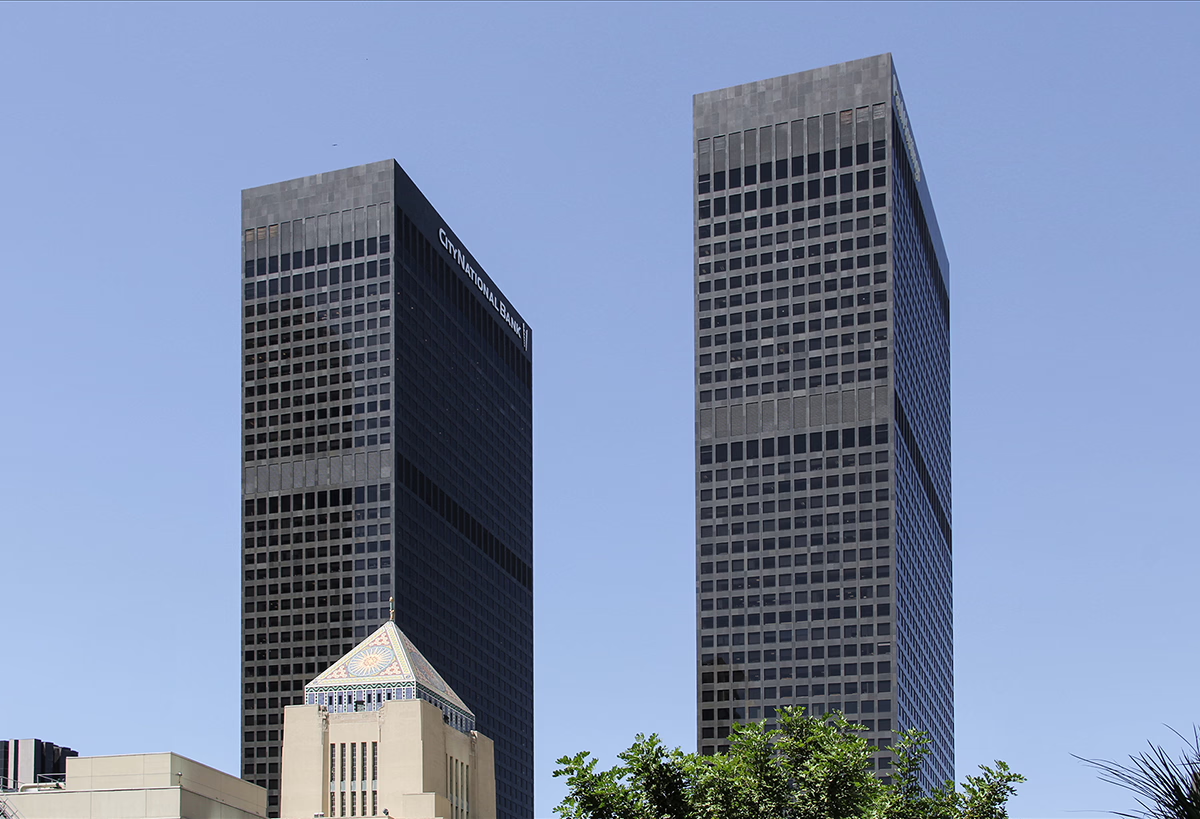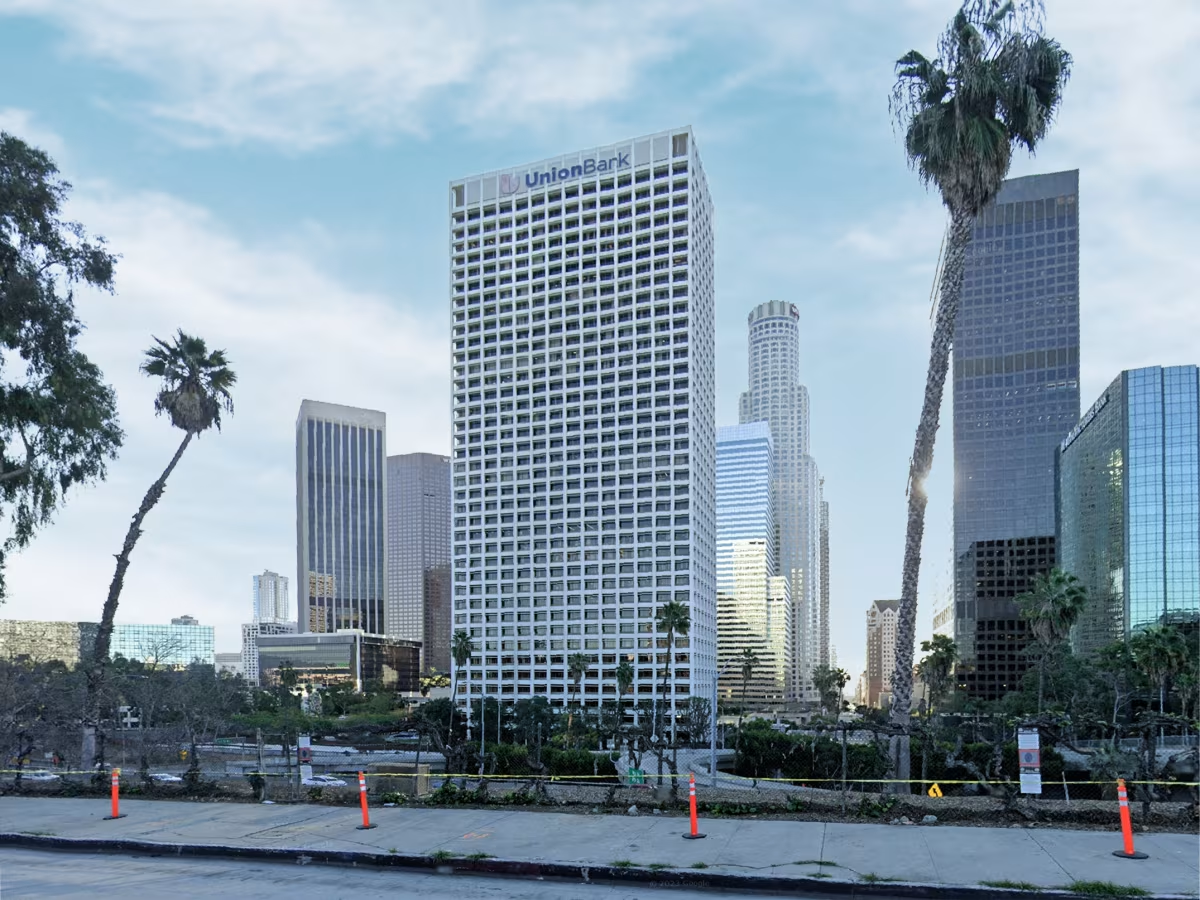City National Plaza vs Union Bank Plaza Tower


Comparing the City National Plaza and the Union Bank Plaza Tower is especially interesting because they share much in common. Both rise in Los Angeles, CA both were designed by Albert C. Martin & Associates, and they were completed within 4 years of each other.
This overlap gives us a unique opportunity to understand how Albert C. Martin & Associates approached different commissions in the same urban context and historical context during a short period.
Height & Size
The City National Plaza is clearly the larger tower of the two, both in terms of height and number of floors. It rises to 699ft (213m) with 52 floors above ground, while the Union Bank Plaza Tower reaches 515ft (157m) with 40 floors above ground.
Of course, each project may have faced different briefs or regulatory constraints, which we don't really know about and could also explain the outcome.
Architectural Style
Both the City National Plaza and the Union Bank Plaza Tower were designed in line with the aesthetic conventions of the International Style style.
The City National Plaza was designed at a moment when the International Style style was already in decline, making it more of a lingering expression of the movement. In contrast, the Union Bank Plaza Tower style was already in decline, making it more of a lingering expression of the movement. In contrast, the Union Bank Plaza Tower was built when the style still carried greater cultural weight.
Uses
Both the City National Plaza and the Union Bank Plaza Tower were designed to serve as commercial towers, and that has remained their main use since their completion, serving similar roles in the urban fabric.
Both towers provide significant parking capacity, with City National Plaza offering 2485 spaces and the Union Bank Plaza Tower offering 914.
Structure & Facade
The two towers rely on different structural systems, reflecting distinct engineering strategies.
The City National Plaza uses a Framed Tube In Tube structural system, which combines a strong central core with a perimeter tube of columns, while the Union Bank Plaza Tower uses a Frame system, that relies on a regular grid of columns and beams to sustain its weight.
Yet, when it comes to their facade, they both employed the same solution, a Window Wall facade.
A window wall system is installed between floor slabs. It is simpler and faster to build than curtain walls, but exposes slab edges and requires careful detailing to avoid thermal bridges.
| City National Plaza | Union Bank Plaza Tower | |
|---|---|---|
| Albert C. Martin & Associates | Architect | Albert C. Martin & Associates |
| 1970 | Construction Started | 1965 |
| 1972 | Year Completed | 1968 |
| International Style | Architectural Style | International Style |
| Commercial | Current Use | Commercial |
| 52 | Floors Above Ground | 40 |
| 213 m | Height (m) | 157 m |
| 206,000 m² | Usable Area (m²) | 68,525 m² |
| 32 | Number of Elevators | 19 |
| Framed Tube In Tube | Structure Type | Frame |
| Steel | Vertical Structure Material | Steel |
| Concrete | Horizontal Structure Material | Concrete |
| Yes | Facade Structural? | Yes |
| Granite, Glass | Main Facade Material | Concrete, Glass |
| CA | State | CA |
| Los Angeles | City | Los Angeles |
| 505 555 South Flower Street | Address | 445 South Figueroa Street |